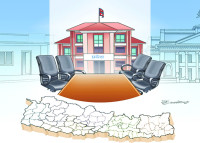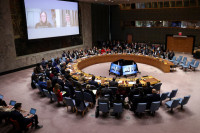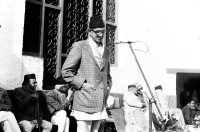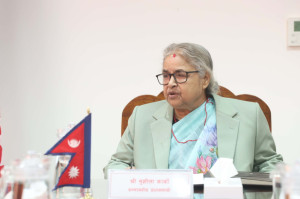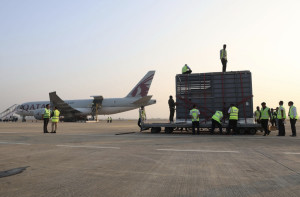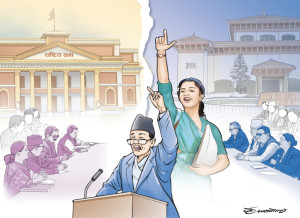Columns
Religion in geopolitics
Religious and sectarian conflicts can trigger clashes in a chaotic international political landscape.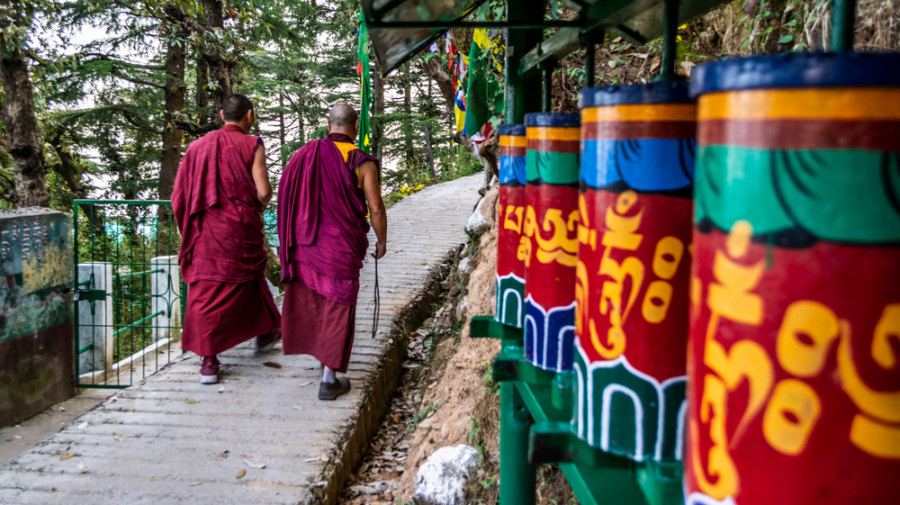
Lok Raj Baral
Buddha never undertook a journey to preach his teachings in the Himalayas. Born in Nepal, he attained enlightenment in Bodh Gaya and first met his disciple in Sarnath, Varanasi, India. However, people didn’t appreciate his newfound enlightenment until other Southeast Asian countries and Ceylon (Sri Lanka) recognised him. His teachings subsequently travelled back to India and its neighbouring countries like Nepal and Bhutan.
People’s acceptance of any religion was possible only when rulers patronised and popularised it. This has happened to major religions worldwide as rulers adopted them either as faith or as elements of legitimacy. The latter trend seems more explicit, with rulers integrating religion into constitutions and legal documents to regulate society and polity.
Much of Nepali civilisational heritage hinges on the Kathmandu Valley, where Buddhism is believed to have come to Nepal much before the Lichhavi period. It is also said that Buddhism developed its access to China through Southeast Asia and part of Central Asia. But India was the centre of learning, including educational institutions and Buddhist shrines. The Buddhist monks and travellers who took months and years to visit such institutions and took back information regarding India and Nepal were the most significant connecting links between the Indian subcontinent and China via Tibet. Later, due to the domination of other religious and cultural patronage provided by the succeeding generations of rulers in China, India, and Nepal, Tibet remained an exclusive zone, retaining Buddhism as the sole religion.
In China, Buddhism was gradually absorbed by other religious groups after “the state came to control”, making Buddhism a Chinese faith alongside Daoism and Confucianism. As Kanti Bajpai writes, “That Buddhism had more or less collapsed in India by this time only helped in the Sinification of the religion: the land of its origin had ceased to be an inspiration”.
Religion and politics were intermingled in Tibet, as the Dalai Lama was the leader of both. Following China’s declaration of Tibet as an Autonomous Region in 1950, the long-held Dalai Lama tradition was disturbed as the new communist rulers of China started shaping Tibetan heritage in line with the communist order. Such ruptures culminated in the Dalai Lama’s flight in 1959 and changed the nature and dynamics of Sino-Indian relations, with Tibet becoming the main factor for mutual animosity and even border conflicts.
Tibet and Buddhism have now become the principal agenda of “diplomacy” (for India) and “statecraft” (for China). Nirupama Rao, a former foreign secretary and scholar of India, has succinctly described this aspect in her recent article published in The Hindu on July 23, 2025. In China, India and the Conflict over Buddhism, she states that higher altitude conflict is “reshaping Asia’s future” and “at its heart is not oil, trade, or weapons but faith”.
Taking Buddhism as a new mantra for enhancing diplomatic reach by enabling as many tourists as possible to promote tourism trade, most countries with sizable Buddhist populations have adopted Buddhism as a reliable diplomatic tool. And Nepal, the birthplace of Buddha with a rich Buddhist cultural tradition, seems to follow others despite its limitations in becoming competitive in this game of soft power.
The asylum granted to the Dalai Lama by India since his flight from Tibet and the surging border tensions arising from the unravelling developments have strained bilateral relations. There have been recurrent border conflicts in Ladakh, Sikkim, Bhutan and Arunachal Pradesh regions, the resolution of which is not possible without settling the border issue.
The question of the new Dalai Lama has dominated politics in the Himalayas because of the discordant stands taken by the Dalai Lama and China. China has declared that it has the sole authority to declare the successor of the current Dalai Lama, who is already 90, while the latter claims that as the spiritual head, he will decide who will be the next Dalai Lama. India and other Western powers have thrown their weight behind the Dalai Lama living in India.
The current issue seems likely to divide the Tibetans in general. In Nepal, too, a few thousand Tibetans have been living as former refugees, but many of them have now become Nepali citizens. Yet, their allegiance to the exiled Dalai Lama continues despite Chinese annoyance at their loyalty. Once, Tibetan activists known as Khampas carried out their anti-Chinese activities in some northern districts abutting Tibet. Later, the Nepali army undertook an anti-Khampa mission following the relaxation in the Sino-US relationship. Since then, Nepal has had to monitor the movement of some Tibetans who used Nepal as a conduit for their entry into India, Europe and the US, though without producing any major friction in Nepal-China relations.
At a time when international politics has become unruly and chaotic, issues that arise from religious and sectarian conflicts may also trigger disputes. Nevertheless, relations between China, India, Nepal and Bhutan are not determined by any particular religion. The simmering India-China conflict has arisen due to several factors, the most important being the border-related problems originating from the time of the British Raj in India. Since China didn’t sign the Simla agreement in 1914, which tried to delineate the India-Tibet border based on the McMahon formula, both countries have engaged in short border wars occasionally. The latest conflict in Ladakh is also the byproduct of such divergent lines of thinking of the two sides.
The role of political religion in international relations is increasingly becoming an intractable subject. In the name of religion, countries are being polarised into hostile camps, and terrorist groups are created in determining identity and existence with concomitant conflicts. Yet, compared to other regions where unending conflicts surge in the name of religion and ethnicity, the Himalayan region is still quiet and peaceful. And Nepal seems to be in an advantageous position because of its manageable level of relations with both neighbours, China and India. Sometimes, such relations appear to be transactional, and sometimes become cordial depending on the power elite’s perceptions and objective understanding of the issues shaping relations.




 16.2°C Kathmandu
16.2°C Kathmandu
